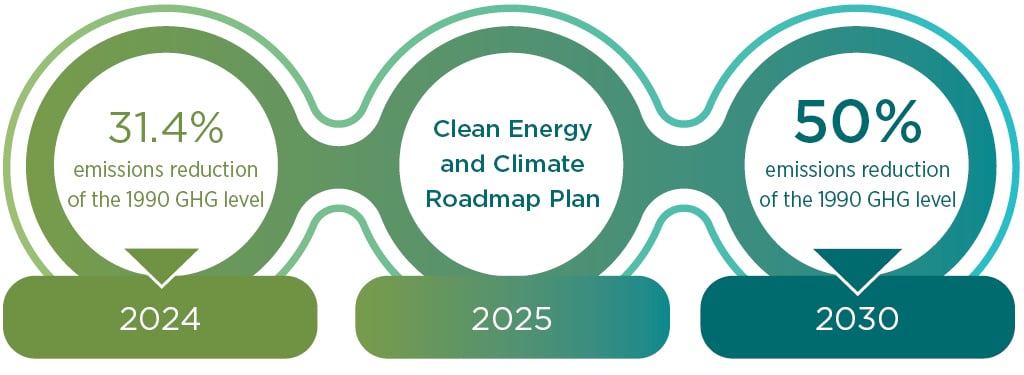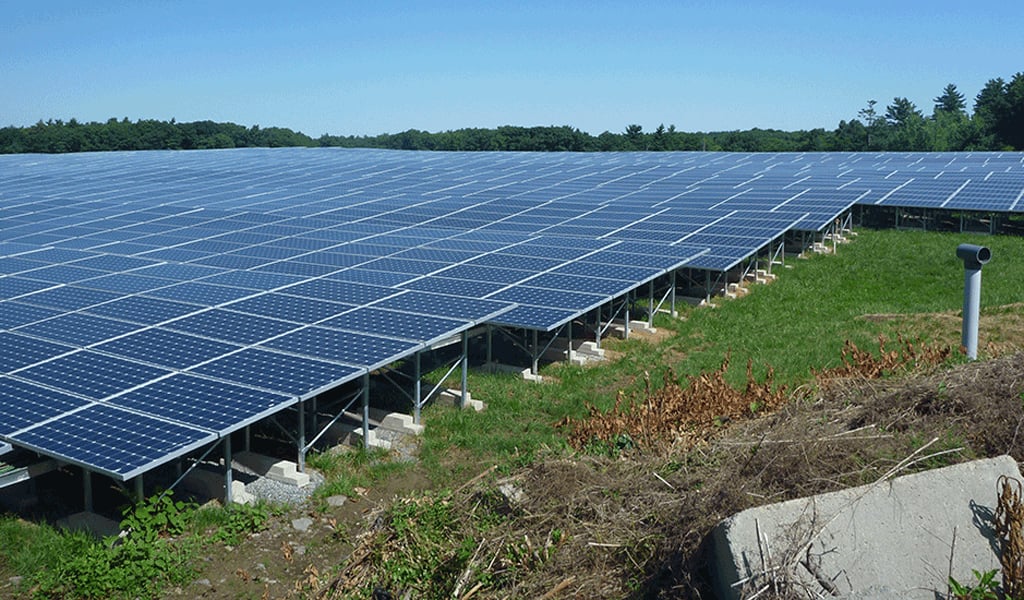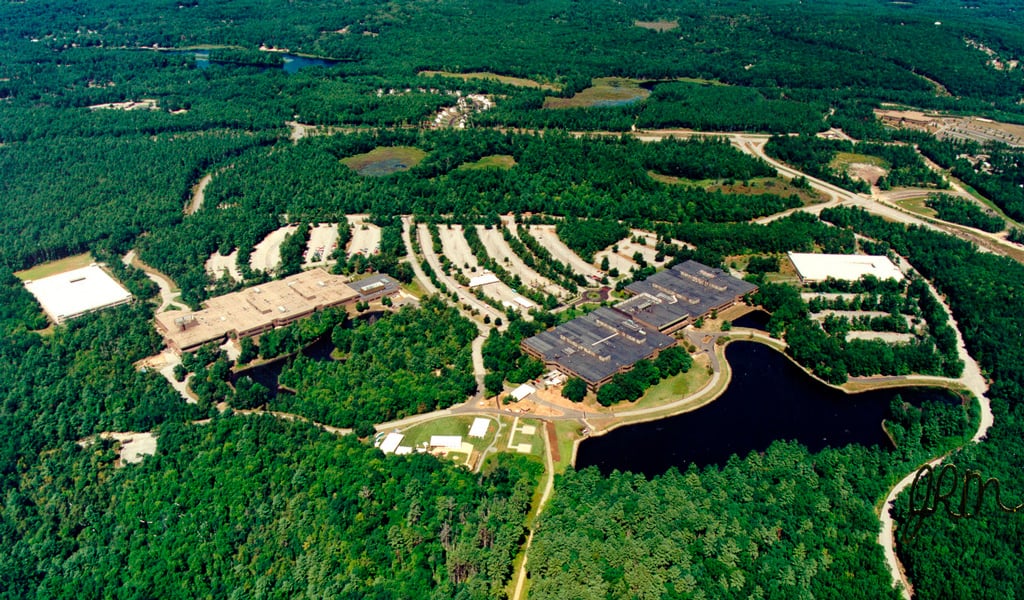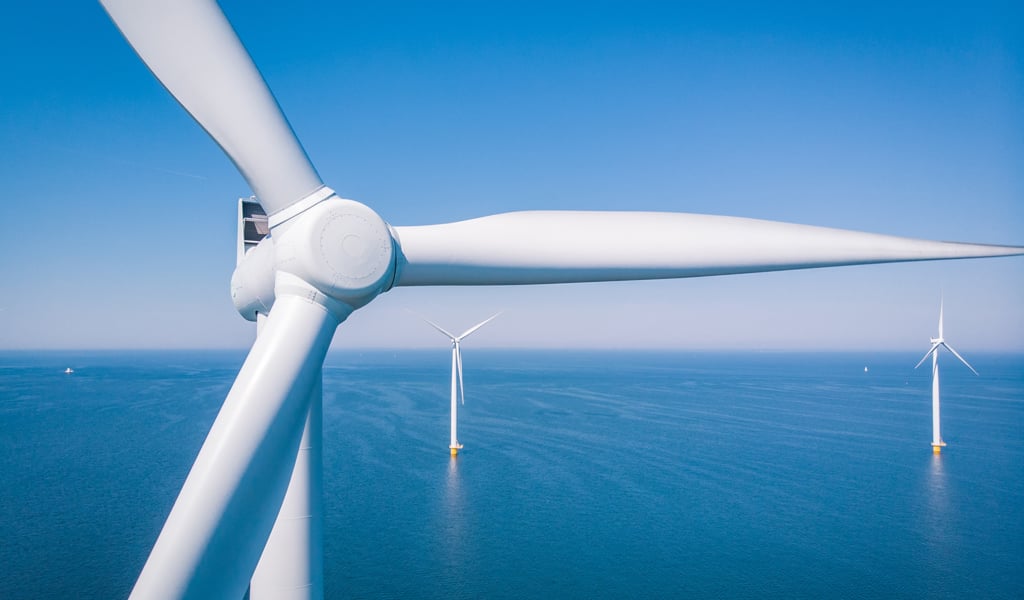Forward-thinking insights focused on a more sustainable tomorrow.
Massachusetts’ Clean Energy Targets: Roadmap to Net Zero by 2050
The stakes have never been higher for launching energy infrastructure projects swiftly in Massachusetts. As a leader in addressing climate change, the Commonwealth set the bold goal of achieving net zero greenhouse gas (GHG) emissions statewide by 2050. Significant progress has been made, with emissions reduced to an estimated 31.4 percent below 1990 levels. However, the state now faces the most challenging stretch of the net-zero pathway charted by its clean energy and climate roadmap plans, which target the greatest emissions reduction between 2025 and 2030 to reach 50 percent of the 1990 GHG level by 2030.
Clean Energy and Climate Roadmap Plan
Net Zero Pathway By Target Emissions Reduction

A Transformed Grid for Tomorrow’s Needs
Achieving Massachusetts’ ambitious goal depends on building a cleaner, stronger, and smarter power system. Electrification is central to decarbonizing the transportation and building sectors, which together account for 72 percent of statewide GHG emissions. This transformation is necessary to meet the anticipated increase in demand for electric vehicles (EVs) and heat pumps, projected to increase Massachusetts’ electric load by 50 percent by 2035 and over 100 percent by 2050. By 2050, household energy use could be 350 percent higher than today.

To meet these demands, Massachusetts must generate over 50 GW of solar and wind capacity by 2050—12 times its current production. The power sector, responsible for 20 percent of statewide GHG emissions, must quickly incorporate clean energy sources and infrastructure upgrades to manage this capacity reliably and withstand climate change impacts.

Southern Sky Renewable Energy developed a solar farm on a closed municipal landfill, contracting VHB for design and permitting assistance. VHB partnered with the client to develop a 5.8 MW facility layout that minimized the amount of existing vegetation that needed to be cleared—vegetation that screens the landfill from neighboring properties. A fully ballasted support system for the panel racks rests on the surface, keeping the panels from penetrating the landfill cap. Southern Sky calls this facility, "the crown jewel of solar projects on closed landfills in the northeast."
Accelerating Project Timelines
Massachusetts’ clean-energy transition will sharply accelerate between 2025 and 2030, requiring energy providers to compress timelines for infrastructure projects. Slow grid enhancement projects, which can currently take up to a decade, are a bottleneck limiting widespread clean energy deployment. The siting and permitting phases alone can delay projects for years. In response, the Commonwealth proposed reforms, including consolidating approvals into a single Energy Facilities Siting Board (EFSB) permit and capping permit reviews.
With a comprehensive range of energy consultancy services—including environmental permitting, siting, surveying, civil engineering, and Inflation Reduction Act (IRA) funding assistance—our multidisciplinary team in New England helps clients achieve timely and cost-effective regulatory compliance. By adopting an integrated services approach, we address the complete project lifecycle, formulating strategic, data-informed solutions to streamline complex siting and permitting processes.

The Merrimack Valley Reliability Project (MVRP) is a 24.5-mile transmission line aimed at enhancing the electric grid’s flexibility and resiliency in a region of southern New Hampshire/northern Massachusetts seeing increased grid demand due to business growth. Using existing transmission corridors to reduce environmental impact, the MVRP includes 175 new structures between Tewksbury, Massachusetts, and Londonderry, New Hampshire, providing reliable and cost-efficient energy services. VHB supported the project by providing siting and licensing, environmental assessments, permitting, surveys, mitigation design, and construction compliance services.
The Road to Net-Zero
Method: Wind
Target: MA may need as much as 23 GW of offshore wind by 2050.
To Get There: MA has a mandate to procure at least 5,600 MW of offshore wind energy by 2027.
VHB Examples: Revolution Wind Construction and Operations Plan; Avangrid’s New England Wind Bid Development.
Method: Solar
Target: MA likely will need 27 GW of solar capacity by 2050.
To Get There: MA will need to more than double its supply of solar PV electricity (3,325 MW as of 2022) to reach 8,360 MW by 2030.
VHB Examples: VHB has delivered or supported more than 1,000 solar energy projects, including projects like Tobacco Valley Solar Farm and Gravel Pit Solar, two Connecticut projects that are among New England’s largest solar farms; also, Waterford Solar Farm in CT, built on land previously used for logging, and ER Salvage Yard Solar Farm in Vermont, built on a former auto salvage yard.
Method: Grid Enhancements
Target: Significant grid upgrades are required to provide the capacity and resiliency to support the clean energy transition. Eversource’s Electric Sector Modernization Plan (ESMP) targets a 180% increase in electrification hosting capacity by 2035; National Grid’s ESMP proposes enabling an nearly 4 additional GW of capacity by 2034.
To Get There: Eversource and National Grid have proposed hundreds of projects to build new or upgraded electricity infrastructure, including more than 40 substations, by 2050.
VHB Examples: National Grid/Eversource Merrimack Valley Reliability Project.
Method: Battery Storage
Target: Reach 5.8 GW by 2050.
TO Get There: Install 1,000 MWh by 2025 and more than 2,500 MWh by 2030.
VHB Examples: Supported some of the region’s first battery storage projects and is actively working on several of New England’s largest and most complex battery energy storage system (BESS) projects.
VHB: A Proven Partner
VHB has built a strong reputation for successfully guiding energy infrastructure projects, having delivered or supported more than 1,000 solar and storage projects. Staying on top of the ever-evolving regional regulatory framework is imperative because large linear projects often cross state lines. We’ve developed technically sound, efficiency-boosting siting and permitting solutions for hundreds of energy infrastructure projects throughout New England, including regional game-changers such as the Revolution Wind Farm that will deliver 400 MW of clean energy to Rhode Island and 304 MW to Connecticut; New England’s largest solar project; and one of the largest battery energy storage system (BESS) project in New England.

VHB managed and developed the Construction and Operations Plan and all federal, state, and local permitting efforts for Revolution Wind Farm.
How VHB Can Help
VHB’s core strengths include environmental permitting and site selection, especially for solar and battery-electric storage projects, backed by strong relationships with regulatory agencies in and around Massachusetts. Our team of professionals leverage their extensive knowledge of the Massachusetts regulatory landscape, including the Massachusetts Environmental Policy Act (MEPA), Chapter 91, and the Wetlands Protection Act, to facilitate clean energy projects with complex siting and permitting requirements.
When a developer acquired Somerset-based Brayton Point Power Plant, once New England’s largest coal-fired power plant, to repurpose it as a precedent-setting offshore wind logistics center, VHB worked with the MEPA office to avoid a lengthy review process while guiding the developer through a maze of Town and State approvals to maintain regulatory compliance during decommissioning and interim site-use operations.
Learn more about how VHB partners with developers and state agencies to deliver clean energy projects by contacting Seth Lattrell.
Learn more on VHB’s Energy Evolution Practice
VHB is your trusted partner in navigating this evolution. Our Energy Evolution Practice provides comprehensive energy consultancy services to support the advancement of infrastructure projects and accelerate the transition towards a low-carbon future. Our multidisciplinary, energy-focused professionals offer a data-informed approach to solving complex energy and climate-related issues to help clients achieve their energy goals and meet today’s—and tomorrow’s—clean-energy needs.



